Dubai unveils new design district with three days of festivities at Meet d3

Dubai Design District – known as d3 – is the latest addition to the city's cultural landscape and was launched at the beginning of the month with Meet d3, a public music, design and fashion festival.
Unlike many of its global contemporaries, d3 is not a story of urban-regeneration. The district, much like its emirate home, is a feat of conjuring something from nothing (albeit with significant financial backing). This sandy lot was originally destined to be a sterile development, slated as the innocuous Dubai Business Park, and was halted by the economic crisis. Acquired by TECOM investments in 2013 – a government entity lead by His Highness Sheikh Mohammed Bin Rashid – the district was re-imagined as 'the region’s first master planned hub and incubator for design and fashion excellence.'
In a city peculiarly regimented and segmented by industries and clustered into districts, Dubai aims to ensure swift international integration. Within this context, conjuring a design district from scratch, with a targeted 10,000 tenants to occupy the 11 Woods Bagot-designed buildings delivered in phase one is a highly ambitious and confident statement of intent.
The launch event itself was unrecognisable by Dubai standards – there were no fireworks or record attempts here. Instead, the event confidently signalled its desire to join a growing global network of urban design enclaves.
The response from the diverse audience was unremittingly positive. Time and again, the sense of inclusivity was remarked upon. It felt like a crowd more representative of this multi-national city than the audiences seen and re-seen at the calendar of established creative events. While it may have felt sterile in comparison to the more ‘organic’ reinventions of the less salubrious areas of western cities, this story of urban generation presents a different kind of potential.
But now the pop-up infrastructure of the Meet d3 event has moved on. Everything from the Andy Wahloo tent to the 'Dragon Skin' ceiling, the outdoor Cinema Akil, fashion stores from Resident and Not Just a Label, and the Restronaut curated food trucks and Bompas and Parr factory were temporary installations. We shall have to wait and see if the inclusive, public spirit of the event will live on.
Ultimately, whether its potential can be realised will depend on ongoing public planning and the concerted efforts of the landlord to continually curate. There have been mutterings of prohibitively high rental prices for start-ups and a few who speak of an overly zealous curation process; access is not only about making the financial cut, prospective tenants must apply and are judged based on their relevance to the future community. However, the weekend's events comprised a mix of 100 creative businesses across art, design, fashion and food; it was a diverse teamsheet that promises much, if it is mirrored in the fledgling community’s tenants.
Richard Wagner, of soon to be tenants Wanders Wagner Architects, the firm behind the event master plan, says this balance is being well struck. ‘What's important is that d3 remains close to the people, that it doesn't become a top-down directive, that they continue to let the designers, the creatives and the users direct the evolution.’ The potential is for proximity to breed opportunity and integration. Only time will tell if the city has the district it wishes existed already.
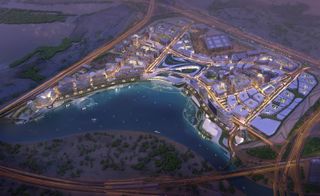
Upon completion in 2019, the 21.5 million sq ft site will feature a mix of commercial, food and drink, retail, entertainment and residential real estate

Bompass and Par brought their chewing gum factory to d3. Visitors could make their own chewing gum from hundreds of flavours. The factory played host to peripatetic dining concept Restronaut's Bompass and Parr dinner
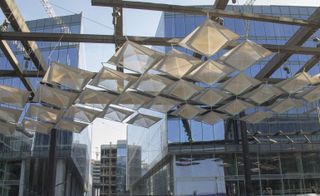
Wanders Wagner Architects and Penguincube were also behind the interactive 'Dragon Skin' ceiling installation
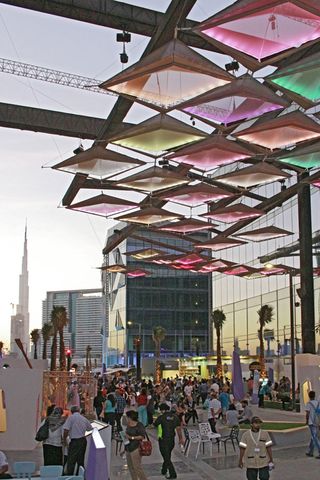
As dusk begins to fall, the 'Dragon Skin' scales start shimmering

'Wink Space', an experiential installation by Masakazu Shirane and Saya Miyazaki. Photography: Courtesy the artists and d3, 2015

Dubai's first Ben Eine mural was revealed at d3. It reads "HAND IN HAND", a message promoting cross-cultural cooperation through art
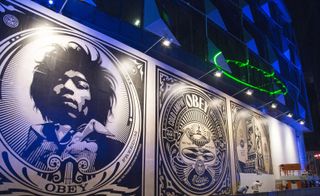
Members of the OBEY crew visited Dubai for the first time to live-paste a massive 30 by 8 metre installation comprising four huge square graphics from their music collection
Wallpaper* Newsletter
Receive our daily digest of inspiration, escapism and design stories from around the world direct to your inbox
-
 Inside Valentino’s glamorous new Sloane Street store, inspired by the art of haute couture
Inside Valentino’s glamorous new Sloane Street store, inspired by the art of haute coutureThe latest in Valentino’s ‘The New Maison’ store concept opens on London’s Sloane Street this week, offering an enveloping marble and carpet-clad space of ‘intimacy and uniqueness’
By Jack Moss Published
-
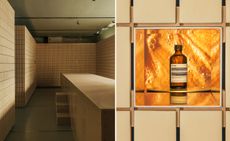 Aesop’s Salone del Mobile 2024 installations in Milan are multisensory experiences
Aesop’s Salone del Mobile 2024 installations in Milan are multisensory experiencesAesop has partnered with Salone del Mobile to launch a series of installations across Milan, tapping into sight, touch, taste, and scent
By Hannah Tindle Published
-
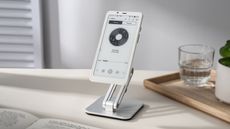 Dial into the Boring Phone and more smartphone alternatives
Dial into the Boring Phone and more smartphone alternativesFrom the deliberately dull new Boring Phone to Honor’s latest hook-up with Porsche, a host of new devices that do the phone thing slightly differently
By Jonathan Bell Published
-
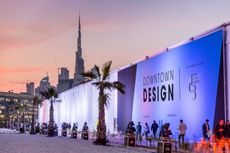 Downtown Design 2022 set to bolster Dubai’s booming design scene
Downtown Design 2022 set to bolster Dubai’s booming design sceneThe Middle East’s leading design fair, Downtown Design returns 9 – 12 November 2022, presenting opportunities for the world’s design industry in the UAE’s booming market In partnership with Downtown Design
By Simon Mills Last updated
-
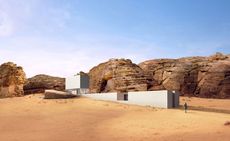 Dubai Design Week 2021 champions local creativity and visions of the future
Dubai Design Week 2021 champions local creativity and visions of the futureDubai Design Week 2021 highlights – here’s our pick of where to go and what to see (8 –13 November 2021)
By Sujata Burman Last updated
-
 Global Grad Show 2020 takes innovation to the next level
Global Grad Show 2020 takes innovation to the next levelFrom a fall prevention device for elderly Parkinson's disease patients to a navigation system made of silk protein, this year’s works address our globe’s complex issues
By Sujata Burman Last updated
-
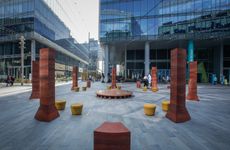 Hozan Zangana's socially-distant seating is inspired by mirages
Hozan Zangana's socially-distant seating is inspired by miragesIn Dubai, the Iraqi designer explores a design based on the Fata Morgana phenomenon, creating public seating that invites people to connect from a safe distance
By Rosa Bertoli Last updated
-
 UAE’s thriving creative scene catapults Dubai Design Week onto a global stage
UAE’s thriving creative scene catapults Dubai Design Week onto a global stageBy Sujata Burman Last updated
-
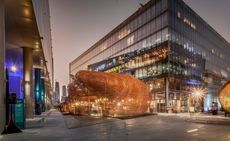 Creative dispatches: highlights from Dubai Design Week 2017
Creative dispatches: highlights from Dubai Design Week 2017By Becky Sunshine Last updated
-
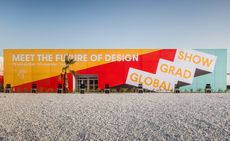 Dubai’s Global Grad show tackles social and enviromental problems through diverse design
Dubai’s Global Grad show tackles social and enviromental problems through diverse designBy Ali Morris Last updated
-
 Desert storm: Dubai hosts two international design and art fairs
Desert storm: Dubai hosts two international design and art fairsBy Suzanne Trocmé Last updated